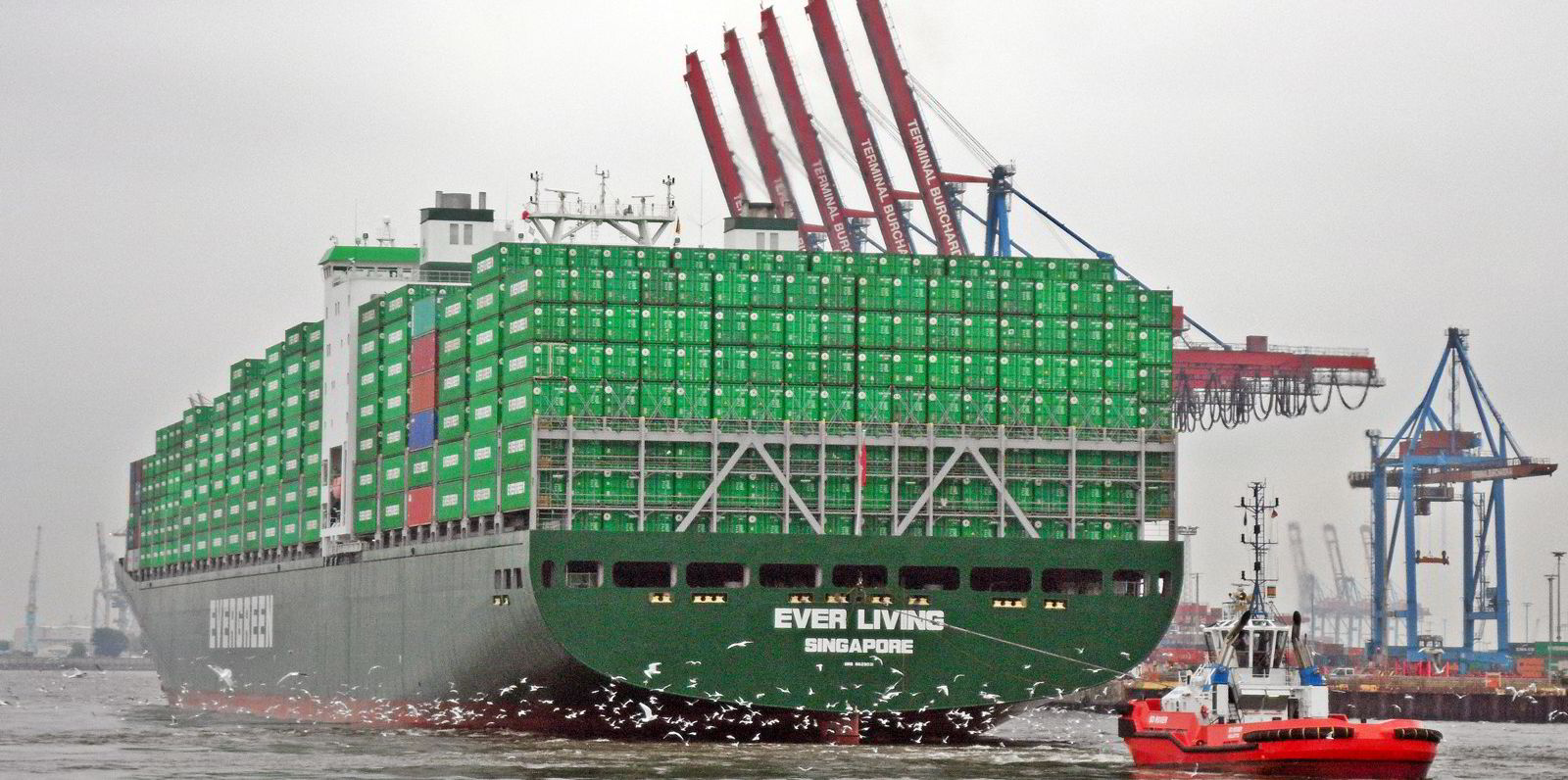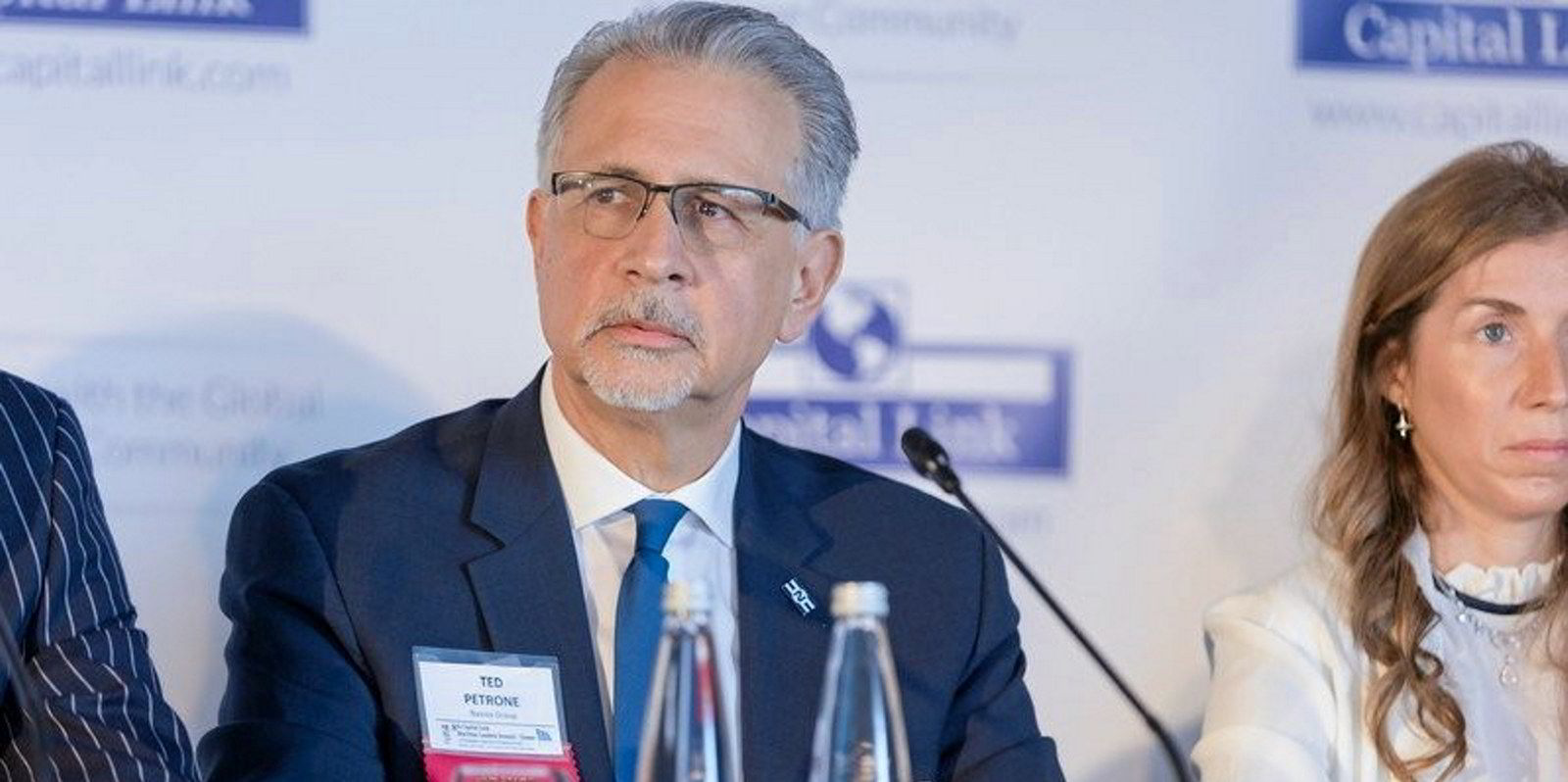Evergreen Marine has emerged as among the worst environmental performers in a new ranking of container shipping carbon emitters.
The Taiwanese liner operator was bottom of the class of the top six carriers operating from Asia to the East Coast of South America in the last quarter of 2022.
The poor performance was due to the use of smaller ships sailing at faster speeds.
Other European lines using larger ships sailing at slower speeds, including Hamburg Sud and Hapag-Lloyd, performed better, according to the Norwegian freight rate benchmarking platform Xeneta.
Carriers were ranked on the main Asia to South American East Coast trade using the Carbon Emissions Index (CEI), compiled by Xeneta and Swedish data provider Marine Benchmark.
The CO2 emitted per tonne of cargo on the trade rose by 6.3% in the fourth quarter of 2022, compared with the previous three months.
This left the trade with a CEI of 96.6, its highest score since the third quarter of 2021 and the highest of all the five main corridors out of the Far East.
The scores of individual carriers were “very mixed”, with clear winners, and others “that would benefit from doubling down on their efforts”, said Xeneta chief analyst Peter Sand.
Evergreen was the worst performer with a score of 109.7. Hamburg Sud was the best performer, recording the lowest CEI rating on the trade, 76.2.
This means a tonne of cargo sailing on a ship operated by Hamburg Sud emitted more than 20% less CO2 than an average tonne on this trade. Sand attributed Hamburg Sud’s low score to sailing “relatively slow steaming” and larger-than-average ships
Another “star” performer was Japan’s Ocean Network Express (82.2). Germany’s Hapag-Lloyd also performed well, registering 84.3, and emerging as the most carbon-efficient carrier on this trade in the past five years.
“Somewhat counter-intuitively, Evergreen actually had the highest filling factor on the trade — whereas Hamburg Sud’s was lower than average — however, its [Evergreen’s] smaller, less carbon-efficient vessels took a toll on the overall score,” Sands said.

“In addition, their ships sailed much faster, with speeds of 8.9% above the trade lane average.”
What green premium?
The green performance did not necessarily come with a premium price tag.
Hapag-Lloyd’s average freight rates in the fourth quarter of last year were lower than average on the spot market, according to Xeneta.
On the long-term contract market, Hamburg Sud charged less than the market average.
Evergreen, on the other hand, was more expensive on the long-term market but offered savings on the spot market compared with the industry average.
Xeneta is seeking to identify the liner industry’s best and worst environmental performers across the world’s 13 leading shipping trades, using real-time AIS data and individual vessel specifications.
The CEI will cover the main route for liner operators, tracking movements and calculating emissions footprints.





